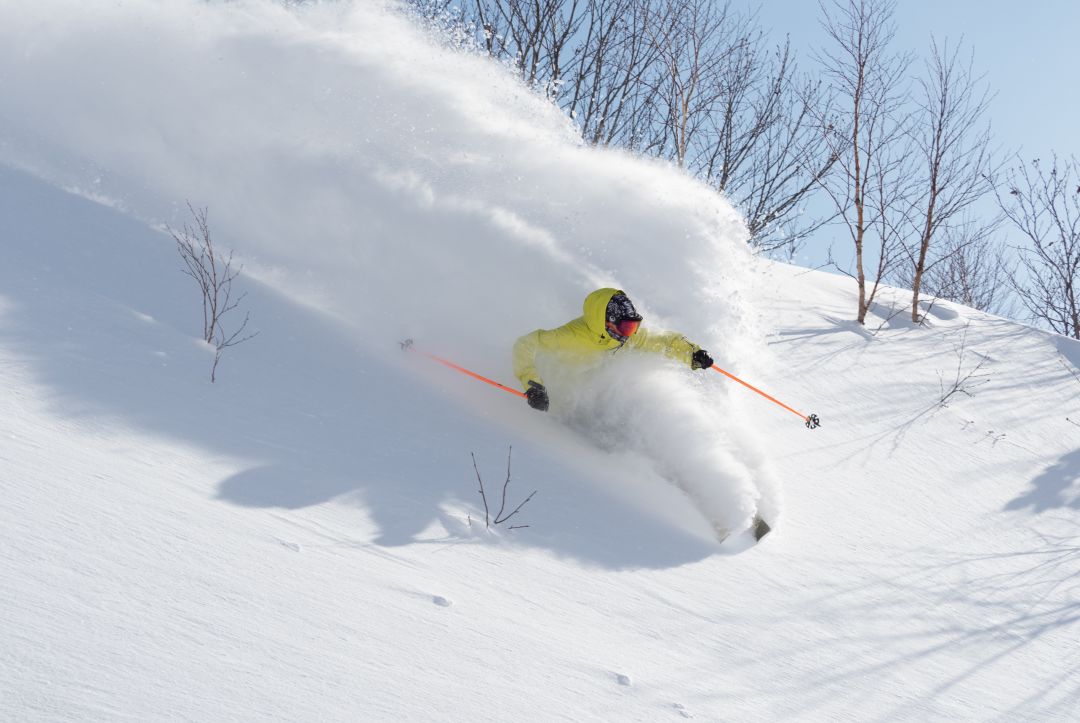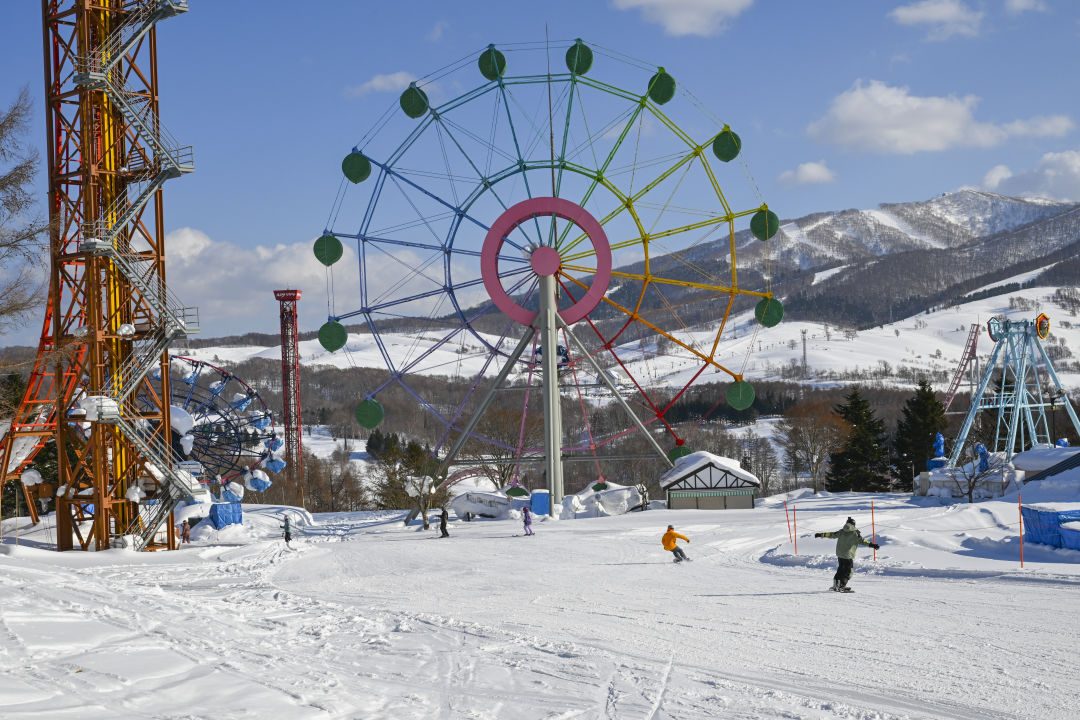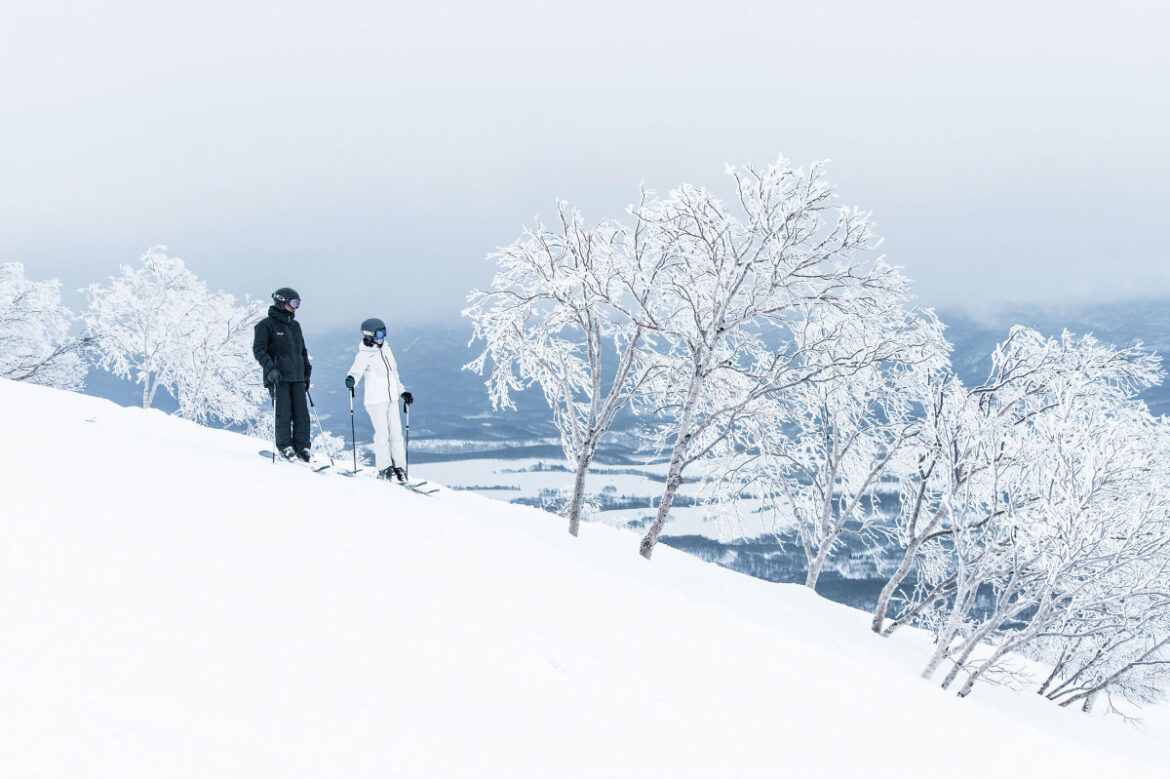
The slopes of Niseko United don’t look like the Pacific Northwest.
In line for passport control in Tokyo Narita airport, a man carrying a pair of loose ski boots sizes us up. “You here with Evo, too?” he asks. Confused, I say no before realizing that my partner’s ski bag is from Evo’s house brand, which might be why the stranger assumed we were affiliated with the outdoor retailer.
Then again, the entire passport queue looks exactly like the checkout line at the Fremont Evo headquarters: English speakers decked out in Patagonia fleeces and Arc’teryx jackets. We’d just deplaned from a Seattle–Tokyo flight, so that’s not exactly shocking; what did surprise me was just how long we bounced through the Japanese countryside in a Seattle bubble.
It began even before departure. Immediately after we chose our travel dates, I heard that no fewer than four unconnected Seattle friend groups had picked the same destination—Hokkaido, Japan’s northernmost of its main islands—and same January weeks for a ski vacation.

The town of Hirafu, which sits at the foot of ski area Niseko United.
My ski buddies and I have company. One reason the stranger in line thought we were from Evo was that the EvoTrip wing of the outdoor company now runs 28 different guided ski tours of the country every winter. “It really is a bucket-list destination from Seattle,” says Jillian Lotti, the brand and experience specialist for Evo. But why a 4,000-mile trip for a sport we can do in our backyard?
The easy answer: economics. In 2024, Americans got an average of more than 150 yen per dollar, the most favorable annual exchange rate since 1986. That advantage brings Japan trips in line with Vail or even Whistler vacations. It even beats the Alps; flights east are comparable to Europe connections, where Americans get less bang for their buck than they did in the early 2000s.

Niseko is snowy but always busy in winter.
Like many tourist centers, Hokkaido’s resort areas price food and services far above local rates. But the country’s walkable, transit-heavy nature makes it relatively simple for travelers to access local retail and dining. The 130-yen steamed pork bun sold at 7-Eleven, a burst of spiced meat served from warming boxes on the counter, seems to single-handedly offset the four-figure round-trip flight.
Plus, American mega-ski passes that cover lift use at Stevens Pass and Crystal Mountain—the Epic Pass and Ikon Pass—also work at two of Hokkaido’s biggest ski areas, Rusutsu and Niseko United. Skiing is free, sorta, once you get there.
Of course one driver to Japan is the signature snow itself. Nicknamed “Japow,” the ski base is known for being cold, dry (that’s a good thing in skiing), and plentiful. “If you look at Japan on the map, it is actually lower in latitude than Seattle is,” says Lotti. Niseko is at about the same elevation as rain-prone Stevens Pass. “It begs the question, why is their snow so much more consistent, and this dry, fluffy powder?”
Turns out that Japan’s island geography has done more than shape the country’s culture. The combination of humidity over the Sea of Japan with frigid Siberian winds makes for lots of cold, fluffy snow. Those of us from a region known for wet, heavy “Cascade concrete” can be easily lured by the promise of cold smoke.

Japow: It’s what brings Seattle skiers halfway across the world.
And the skiing itself is distinct: slopes dotted with naked white birch trees rather than evergreens, gentle pitches in place of Cascade cliffs. Even Niseko United, a ski resort spread across the familiar shape of a volcano, felt different from an American hill; single-chair lifts, retro gondolas, regular announcements broadcast by loudspeakers, and speedy eight-seaters were all novel to Seattle skiers.
Fickle weather is a universal phenomenon, though, and our globe-spanning quest to find Japow came up short; no new snow fell during our Hokkaido trip, leaving us to make do with groomed runs and tracked-out tree bumps. No ski resort on earth can guarantee good snow, and we had plenty of Seattle friends with us for commiseration.

An EvoTrip meal and a street in Myoko, closer to Tokyo.
Yet everyone considered the trip a resounding success, myself included. Why? The culture, obviously.
Halfway down one ski run, we poked into the trees to reach a ramen restaurant with low wooden rafters and an automated ticket-dispensing order system. A mild katsu curry and big bowls of noodles cured lingering chills, met with the sweet hit of a local Sapporo lager.
After skiing, we sat in steamy outdoor onsens, enjoying the long tradition of warm soaks. We saw temples and shrines, ancient architecture and glittering skylines. We sat patiently while an expert hand-folded dozens of pieces of gyoza for our dinner, and we bought snacks by the handful at 7-Eleven.

Rusutsu Resort’s iconic wheel.
Tourism to Japan is up from all points in the globe, with a record-breaking 3.9 million visitors in April 2025. The number of tourists from the US rose more than 40 percent over last year, and in June New York Magazine suggested that tourist hub Kyoto—the cultural destination south of Tokyo that all my Seattle friends tacked on to their ski trip—had become “the loveliest tourist trap on earth.” Seattle is hardly alone in flooding the country.
Walking through Hirafu, Niseko’s town center, my companion ran into an old coworker unexpectedly; they’d worked together more than two decades ago. Among the chat and pleasantries, no one asked, “What are you doing here?” The answer was self-evident. Instead, everyone bemoaned the weather and spoke of planning next season’s return trip to Japan.


AloJapan.com